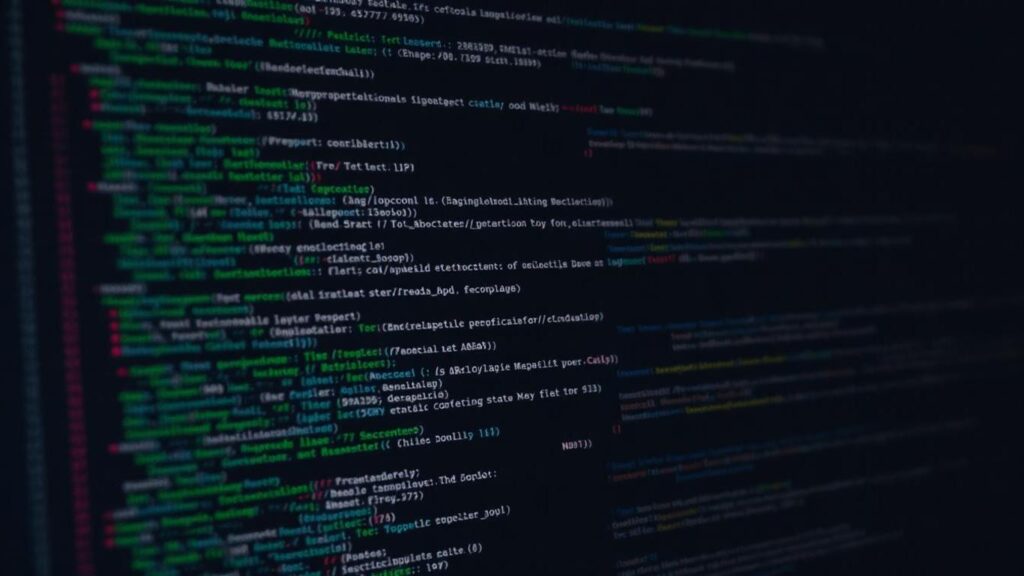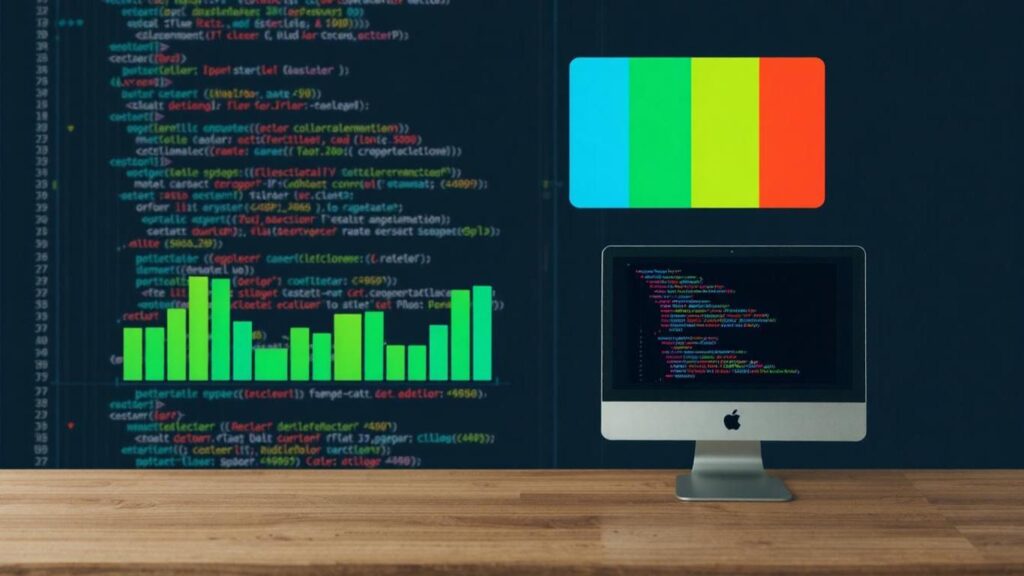Technology is evolving at an unprecedented rate today. The language and tech you study today gets outdated in the next 6-12 months. Its difficult to cope up with changes. The lucrative features that are offered in newer sophisticated languages that may come with tremendous performance and maintenance benefits are hard to just let go. Therefore, code migration from one programming language to another is a critical yet complex endeavor. All those legacy applications you’re business relies on need to get a good upgrade businesses often find themselves needing to migrate their codebase to enhance performance, improve scalability, ensure maintainability, or adopt modern development standards.
In the dynamic realm of software development, technology is constantly evolving, compelling businesses to stay ahead of the curve. One significant aspect of this evolution is code migration — the process of transitioning an existing codebase from one programming language to another. Whether driven by the need for improved performance, enhanced scalability, or simply to keep up with the latest trends in software architecture, code migration is a crucial strategic decision for any organization.
As applications age, they may become difficult to maintain, especially if they were developed in a language that is no longer actively supported or widely used. Companies often face challenges such as rising maintenance costs, decreased developer productivity, and performance bottlenecks, all of which can be alleviated by migrating to a more modern and efficient language. However, code migration is not a task to be taken lightly. It requires careful planning, meticulous execution, and a clear understanding of the potential risks and rewards.
The process of code migration involves more than just translating syntax from one language to another. It includes assessing the current codebase, identifying dependencies, evaluating the business impact, and ensuring that the new codebase adheres to best practices in software engineering. A successful migration can result in faster development cycles, more secure and maintainable code, and a product that is better suited to meet evolving business needs.
This article explores the essentials of code migration, focusing on how to plan for a seamless transition. We will cover the major areas that should be considered, the potential impacts on a business, why code migration is important, and a brief overview of the costs involved. By the end, you’ll have a clear roadmap for undertaking a successful code migration, ensuring that your application not only survives but thrives in the modern tech landscape.
Table of Contents
Key Areas to Consider for Code Migration.
Sample – Detailed Checklist for PHP to Python Code Migration.
Why Code Migration is Important
How Code Migration Optimizes Costs.
What is Code Migration?
Code migration is the process of transitioning a software application or system from one programming language to another. This process often involves rewriting, translating, or refactoring the existing codebase to work seamlessly in a new development environment. Companies might undertake code migration for various reasons, such as:
- Technological advancement: Leveraging modern languages for better performance and support.
- Cost efficiency: Reducing licensing costs or operational inefficiencies.
- Maintainability and scalability: Adopting a language with stronger community support and libraries.
Effective code migration requires meticulous planning, execution, and testing to ensure minimal disruptions and maximum benefits.

Key Areas to Consider for Code Migration
A successful code migration project involves several critical considerations. Let’s break them down:
1. Assessment and Feasibility Analysis
- Current Codebase Analysis: Understand the architecture, dependencies, and complexity of the existing system.
- Business Objectives: Determine why the migration is necessary and align technical goals with business goals.
- Technology Stack Evaluation: Research the target language’s capabilities, ecosystem, and compatibility.
- Risk Assessment: Identify potential risks such as data loss, performance degradation, or project delays.
2. Planning and Strategy Development
- Project Scope: Clearly define what will be migrated, what will be refactored, and what can be deprecated.
- Timeline and Milestones: Create a realistic timeline with key milestones for code translation, testing, and deployment.
- Resource Allocation: Assign dedicated teams, including developers, testers, and project managers.
- Version Control: Use version control systems (e.g., Git) to track changes and ensure code integrity.
3. Code Translation and Refactoring
- Automated Tools: Utilize code translation tools to streamline repetitive tasks.
- Manual Refactoring: Optimize the code to leverage the strengths of the new language.
- API and Library Mapping: Ensure equivalent libraries and APIs are used, or create adapters if necessary.

4. Testing and Quality Assurance
- Unit Testing: Verify individual modules for correctness.
- Integration Testing: Ensure components interact smoothly.
- Performance Testing: Benchmark old vs. new code performance.
- User Acceptance Testing (UAT): Gather feedback from end-users.
5. Deployment and Monitoring
- Staging Environment: Deploy in a staging environment before production.
- Rollback Plan: Prepare a rollback strategy in case of critical issues.
- Monitoring and Support: Use monitoring tools to track application performance and errors post-migration.
Sample – Detailed Checklist for PHP to Python Code Migration
Lets consider we want to do code migration from php code base for an application to python. Here’s a comprehensive checklist to ensure a smooth transition from PHP to Python:
| Step | Description |
| Assessment and Feasibility | |
| Analyse PHP Codebase | Identify dependencies, libraries, and architecture. |
| Identify Business Requirements | Align the migration with business goals. |
| Evaluate Python Ecosystem | Research Python frameworks (Django, Flask) and libraries. |
| Risk and Impact Assessment | Identify potential roadblocks and mitigation strategies. |
| Planning and Strategy | |
| Define Project Scope | Specify which parts of the application will be migrated. |
| Set Milestones and Timeline | Create a detailed timeline with deadlines. |
| Allocate Resources | Assign developers, testers, and managers. |
| Set Up Version Control | Initialize Git repository for migration. |
| Code Translation and Refactoring | |
| Create Python Project Structure | Set up Python virtual environment and directory structure. |
| Translate PHP Code to Python | Use automated tools for initial conversion. |
| Manual Refactoring | Refactor code to utilize Python idioms and best practices. |
| API and Library Substitution | Replace PHP libraries with Python equivalents. |
| Database Migration | Convert MySQL queries to Python ORM (e.g., SQLAlchemy, Django ORM). |
| Testing and Quality Assurance | |
| Unit Testing | Write unit tests for each module. |
| Integration Testing | Test the interaction between modules. |
| Performance Testing | Benchmark and optimize the Python code. |
| User Acceptance Testing | Get feedback from stakeholders and users. |
| Deployment and Monitoring | |
| Set Up Staging Environment | Deploy in staging before production. |
| Prepare Rollback Plan | Develop a strategy to revert changes if issues arise. |
| Deploy to Production | Migrate the application live. |
| Monitor Application | Use monitoring tools (e.g., Prometheus, New Relic) to track performance and errors. |
| Provide Ongoing Support | Establish a support structure for bug fixes and updates. |
Impact of Code Migration
The impact of code migration on a business can be profound and multi-dimensional. Let’s explore both positive and negative aspects:

Positive Impacts:
- Enhanced Performance: Modern languages often offer better speed and efficiency.
- Improved Maintainability: Cleaner, modular code makes future development easier.
- Security Enhancements: New languages often come with improved security features.
- Competitive Advantage: Faster development cycles and better user experience.
Negative Impacts:
- Downtime Risks: Temporary loss of productivity during migration.
- Learning Curve: Developers may need time to get proficient in the new language.
- Unexpected Costs: Project delays or unforeseen compatibility issues.
Why Code Migration is Important
Understanding the importance of code migration helps in making a strong business case for undertaking such a project:
- Future-Proofing: Adapting to evolving technologies prevents obsolescence.
- Cost Optimization: Migrating to open-source technologies reduces licensing fees.
- Improved User Experience: Faster, more reliable applications drive customer satisfaction.
- Talent Acquisition and Retention: Modern tech stacks attract top engineering talent.
How Code Migration Optimizes Costs
One of the most compelling reasons for code migration is cost optimization. Let’s explore two real-world examples that illustrate how businesses achieve this through code migration:
Example 1: Migrating from a Proprietary Language to Open Source
A mid-sized financial services company was using a proprietary programming language and development environment, which came with high licensing fees and limited flexibility. By migrating their core applications to Python, an open-source language with a vast ecosystem, they eliminated annual licensing costs while gaining access to a large pool of talented developers. The transition reduced their development and operational expenses by 30%, allowing them to reinvest the savings into product innovation and market expansion.
Example 2: Moving from PHP to Python for Performance Gains
A popular e-commerce platform originally built in PHP began experiencing performance bottlenecks as traffic scaled. After migrating to Python with Django, the company not only improved the application’s speed and scalability but also reduced server costs. By handling more concurrent users with fewer resources, their cloud hosting expenses dropped by 25%, while the development team benefited from faster release cycles and cleaner, more maintainable code.
These examples highlight that code migration, when thoughtfully planned and executed, can significantly reduce both direct costs (e.g., licensing and hosting fees) and indirect costs (e.g., developer time and maintenance overhead).
The Importance of Data Migration Post Code Migration
Data migration is utmost important aspect here that needs to be mentioned. It would require its own dedicated article. Let me know in the comments if you think you wanna know more on it. So, now that the code migration is complete, an equally important aspect is data migration — the process of transferring data from the old system to the new environment. Without proper data migration, even a flawlessly migrated codebase can fail to deliver value. Data migration ensures that all historical, transactional, and user data remains accessible, consistent, and secure in the new system.
A well-planned data migration strategy mitigates the risk of data loss, downtime, and inconsistencies that could impact business operations. Below is a detailed checklist for ensuring a smooth data migration process:
| Step | Description | Key Considerations |
| Data Audit | Assess the existing data, its structure, volume, and dependencies. | Identify redundant or obsolete data to clean up before migration. |
| Backup Strategy | Create backups of all critical data before beginning the migration. | Ensure multiple backup copies, including offsite storage. |
| Data Mapping | Define how data fields in the old system map to fields in the new system. | Account for format changes, data types, and field relationships. |
| Transformation Rules | Develop rules for transforming data to fit the new system’s schema. | Ensure data integrity, accuracy, and compliance with the new architecture. |
| Migration Tools | Select or build tools for extracting, transforming, and loading (ETL) data. | Use automated tools where possible to reduce human error. |
| Testing & Validation | Test data migration on a staging environment before production. | Validate row counts, data accuracy, and integrity checks. |
| Incremental Migration | Migrate data in phases rather than all at once to minimize risks. | Prioritize critical data and ensure seamless fallback options. |
| Performance Optimization | Optimize database queries and indexing for faster performance post-migration. | Monitor query execution times and adjust indexing strategies. |
| Security & Compliance | Ensure data encryption, masking, and compliance with relevant regulations. | Validate that sensitive data remains secure throughout the migration process. |
| Go-Live & Monitoring | Execute final data migration and monitor for issues. | Set up real-time alerts for data inconsistencies or downtime. |
By giving equal importance to both code and data migration, businesses can ensure a comprehensive transition that delivers maximum value, performance, and operational continuity.
Overview of Costs Involved
A major concern with code migration is its cost, which can be broken down into the following components:
1. Development Costs
- Salaries for developers, testers, and project managers.
- Training costs for teams to learn the new language.
2. Infrastructure Costs
- New development and testing environments.
- Licensing fees (if applicable).
3. Testing and QA Costs
- Automated testing tools.
- Third-party QA teams (if outsourcing).
4. Maintenance and Support Costs
- Ongoing bug fixes and performance optimization.
- Support contracts with external vendors.
5. Opportunity Costs
- Potential revenue loss during downtime or slow performance.
Conclusion
Code migration is not merely a technical undertaking but a strategic investment in the future of a business. By understanding what code migration involves, carefully planning each phase, and anticipating both impacts and costs, companies can achieve a smooth transition to a new programming language. The key is to approach the process holistically, ensuring that technical improvements translate into tangible business outcomes. We can safely conclude that, code migration is more than just a technical necessity; it is a strategic initiative that can shape the long-term success of a business. As companies strive to stay competitive in an ever-changing digital landscape, transitioning to a more modern and efficient technology stack can unlock numerous benefits, from improved performance and security to enhanced maintainability and developer satisfaction.
By understanding the key phases of code migration — from assessment and feasibility analysis to testing, deployment, and ongoing support — organizations can mitigate risks and ensure a smooth transition. Careful planning and resource allocation are crucial to avoiding downtime, unexpected costs, and performance issues. A well-executed code migration project not only preserves the core functionality of your application but also empowers your development team to build and innovate more efficiently.
Ultimately, the importance of code migration lies in its ability to future-proof your software, align technological capabilities with business goals, and create a more agile and responsive digital infrastructure. As the software development landscape continues to evolve, companies that embrace and plan for code migration thoughtfully will position themselves for long-term success and growth. So, take the plunge, plan meticulously, and watch your technology ecosystem transform for the better.
Related Articles







